|
As the capital, Yaoundé social profile is a microcosm of Cameroon's rich ethnic diversity. It is home to people from all 250+ ethnic groups found across the country, though the Beti-Pahouin group, indigenous to the central region, forms a significant portion of the local population. This diversity is reflected in the linguistic landscape; while French is the official language of administration and education, local languages like Ewondo, Bassa, and others are widely spoken in daily life. English, the other official language of Cameroon, is also increasingly heard, particularly among the educated populace and those from the Anglophone regions. Christianity is the predominant religion, with a significant Muslim minority and adherents of traditional African beliefs. This blend of cultures, languages, and religions contributes to Yaoundé's vibrant and dynamic social fabric.
Beyond government, the service sector forms the backbone of the city's economy. This encompasses banking, finance, insurance, telecommunications, retail, and hospitality. The presence of numerous embassies, international NGOs, and regional offices of multinational corporations further bolsters the service industry. While not a major industrial hub like Douala, Yaoundé does host some light manufacturing industries, including breweries, tobacco factories, and food processing plants. Local craftsmanship, especially in wood, leather, and textiles, also contributes to the informal economy. Agriculture, though less dominant within the city limits, still plays a role in the surrounding areas, with coffee, cocoa, and timber being significant products processed or traded through Yaoundé. The informal sector, comprising small-scale vendors, street hawkers, and various unregistered businesses, is a vital part of the urban economy, providing livelihoods for a large segment of the population, despite its challenges in terms of regulation and social security. Yaoundé stands as Cameroon's intellectual heart, home to some of the nation's most prestigious educational and research institutions. The University of Yaoundé I and the University of Yaoundé II (located in Soa, a suburb) are the country's oldest and largest public universities, attracting students from across Cameroon and neighbouring countries. These universities offer a wide range of disciplines, from arts and humanities to sciences, engineering, and medicine, fostering a vibrant academic environment. Beyond the universities, Yaoundé boasts numerous specialised schools, vocational training centres, and research institutes, dedicated to fields like agriculture, public administration, health, and scientific research. These institutions contribute significantly to human capital development and knowledge creation within the country, cementing Yaoundé's reputation as a centre for learning and innovation. Yaoundé's cultural scene is as diverse as its population. Music is an integral part of daily life, with various genres like Makossa, Bikutsi, and Njang heard everywhere, from bustling markets to upscale nightclubs. The city hosts numerous cultural events, festivals, and concerts throughout the year, celebrating local traditions and contemporary artistic expressions. Art galleries, craft markets, and performance venues showcase the talents of Cameroonian artists. |
Yaoundé Profile |
Yaoundé Profile |
Yaoundé Profile | Yaoundé Profile |
For information, videos and photos about the African nation of Cameroon, check out our profile pages.
More >
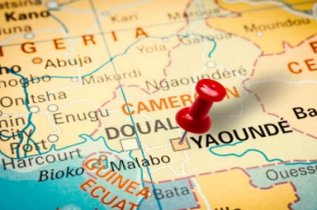 |
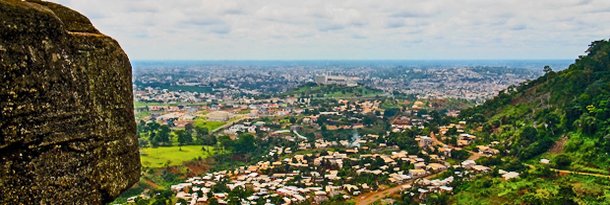
|
Cameroonian cuisine, known for its rich flavours and diverse ingredients, is widely available. Local dishes like "Ndolè" (a bitter leaf stew), "Eru" (a vegetable soup), "Koki" (steamed bean cake), and various grilled meats and fish are popular. The city's markets, such as the famous Mfoundi Market, are sensory overload experiences, offering fresh produce, spices, fabrics, and a glimpse into the daily rhythm of Yaoundé life. Football (soccer) is almost a religion in Yaoundé, with local clubs and the national team enjoying immense popularity, reflecting the country's passion for the sport.
Within the city, the road network has seen significant improvements, though traffic congestion remains a considerable challenge, particularly during peak hours, indicative of the city's growth outpacing its infrastructure. Public transportation is primarily provided by shared taxis and moto-taxis, which are ubiquitous and essential for navigating the hilly terrain. Efforts are underway to expand and modernise public transport options, including the potential for bus rapid transit systems. Access to electricity and potable water has improved in central areas, but challenges persist in newer, less planned neighbourhoods. Telecommunication services, including mobile networks and internet connectivity, are generally well-developed. Yaoundé offers a range of attractions that reflect its history, culture, and natural beauty:
Despite its continuous growth and development, Yaoundé faces significant challenges common to many rapidly urbanising African cities. These include overpopulation, inadequate housing, traffic congestion, waste management issues, and a strain on basic services. Unemployment and underemployment, particularly among the youth, remain pertinent concerns. While relatively stable compared to some other regions, security and governance issues require ongoing attention. However, Yaoundé's future outlook is promising. As the political nerve centre of Cameroon, it continues to attract investment and development projects aimed at improving infrastructure, promoting economic diversification, and enhancing the quality of life for its residents. Its strategic location, strong educational base, and vibrant cultural scene position it well for continued growth and its role as a key player in Central African development. The video (above, left) shows various aspects of Yaounde and what its like living there After you've watched the video why not check out and explore our other Cameroon profile pages? |
 Yaoundé's economic profile is primarily driven by its role as the administrative and political capital. The government and public sector are the largest employers, providing stable jobs for a significant portion of the population. This includes ministries, state-owned enterprises, and various national and international organisations.
Yaoundé's economic profile is primarily driven by its role as the administrative and political capital. The government and public sector are the largest employers, providing stable jobs for a significant portion of the population. This includes ministries, state-owned enterprises, and various national and international organisations.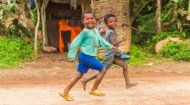


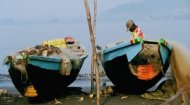
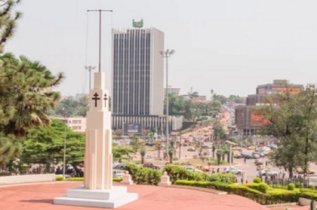 As a rapidly expanding capital, Yaoundé's infrastructure development is a continuous process. The city is served by Yaoundé Nsimalen International Airport (NSI) (sse article above), which connects it to major cities across Africa and Europe. A railway line links Yaoundé to Douala and Ngaoundéré to the north, facilitating freight and passenger transport.
As a rapidly expanding capital, Yaoundé's infrastructure development is a continuous process. The city is served by Yaoundé Nsimalen International Airport (NSI) (sse article above), which connects it to major cities across Africa and Europe. A railway line links Yaoundé to Douala and Ngaoundéré to the north, facilitating freight and passenger transport.


